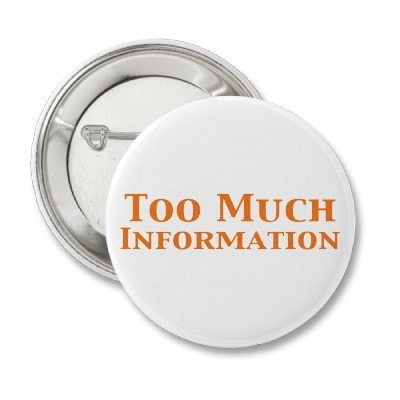Exclusive Access Granted To Our Blog!
|
Planning promotions with a yearly calendar is a good way to achieve your business goals. Whether you want to boost sales during slow periods, or hold flash sales to motivate current customers to buy additional products, this is an effective and organized approach that gets results. It would seem like the more sales and promotions you offer, the more results you’ll get. But this isn’t always the case. If you offer too many, you run the risk of promotion overkill. Here are the top 3 reasons why you should limit your promos. Customer Burnout When you offer occasional promotions throughout the year, your customers will be excited. You can build buzz leading up to each and which could result into more sales. But if you run too many, your audience could burn out and your promotions will lose their effectiveness and novelty over time. One way to mitigate this is to mix up your promotions. Offer discounts on different types of products and services. Segment and target specific groups within your audience. Try to find the most important and relevant times of year for your promotions. Devaluing Your Brand Holding too many promotions can devalue your brand. People will see you as a business that offers cheap goods. Ideally, your customers buy from you because your products and services offer unique solutions to their problems. They love the value you offer, not just the low prices. For example, if you run a promotion once every two months like clockwork, people will wait until the next promotion to buy from you. They know you’re going to run it, so they’ll just plan their buying around the sale and never pay full price. Fewer Profits Offering constant promotions can also hurt your bottom line. If you’re always selling below the regular price, you simply won’t earn as much from your sales. You’ve put in the work setting your product pricing so that it yields a good return on investment. Promotion overkill will undermine these efforts. Promotions are a way to get a temporary burst of income when you need it. You should plan them during sales slumps when people aren’t buying like they usually do. This way, promotions won’t interfere with your regular sales. Finding the Sweet Spot Promotions are a great strategy but don’t overuse them. They should offer incredible value, not just a reduced rate. How many promos should your business run? This depends on your customers and your brand. Every target audience has their own sweet spot. Find yours by creating a yearly promotional calendar and testing it out. Want to learn more about growing and developing your business? Visit Innovative Business Solutions website HERE. Visit Innovate Academy For Entrepreneurs HERE. Pat Simes is a Business Strategist, blogger and Founder of Innovative Business Solutions and Innovate Academy. She currently resides in the Midwest and is committed to inspiring and empowering entrepreneurs to transform their vision to reality.
0 Comments
If you plan your promotional calendar a year in advance, this will help you generate a steady income while offering great value to your customers. When planning your promotions, there are many types to choose from. Here are 5 popular and effective promotion ideas to inspire you. Flash Sales A flash sale is a very short, limited-time offer. It can last just a few days or even a few hours. The idea is to offer a deep discount in a short window of time – and then it’s gone. Make sure your Flash Sale is not something you offer every month just to generate sales but, something offered periodically such as twice a year to motivate people to purchase your offer. Seasonal and Holiday Sales Seasonal and holiday sales are promotions that are linked to an annual event or time of year. This includes Valentine’s Day, summertime, or ‘back to school’ sales. These promotions are effective because they’re tied to important events in your customers’ lives, making your sale relevant, memorable, and meaningful. Annual Sales Another option is to hold a major annual sale. Create a promotional event that your customers will look forward to every year. Annual sales are often used by businesses that rarely offer promotions. Choose a time of year when sales are slow. For example, if you have a dip in sales in January, this is the ideal time to hold your annual promotion. You can also use your annual promotion to fill a gap in your calendar, during a quiet time when there isn’t a relevant or exciting holiday to celebrate. Clearance Sales Clearance sales allow you to get rid of excess stock or items that aren’t selling. Offer a steep discount to motivate people to buy. BOGOF BOGOF stands for “buy one get one free.” Most commonly, BOGOF means that you’re offering two items for the price of one, but it can also refer to product bundles or free upgrades with purchase. The idea is that your customer can buy a product at regular price and get something else in the bargain. Pair products that people typically buy together, or products that can be used together, and increase the value of the BOGOF offer. Creating Your Profitable Promo Calendar How do you put these promotional types to work? Analyze your cycle, pick the optimal times of year for your promotions, and then create the right offer for your target audience. Want to learn more about growing and developing your business? Visit Innovative Business Solutions website HERE. Visit Innovate Academy For Entrepreneurs HERE. Pat Simes is a Business Strategist, blogger and Founder of Innovative Business Solutions and Innovate Academy. She currently resides in the Midwest and is committed to inspiring and empowering entrepreneurs to transform their vision to reality.
Well-timed promotions can help you sell more, hit your targets, and achieve your business goals. But it takes some planning and preparation to get the timing just right, while offering your customers maximum value. Before you can start planning your promotions, you need to ask yourself these 5 essential questions. Who Am I Targeting? First, it’s essential to know your audience. You need to know what issues and problems they face so that your offer provides a solution. You’ll also need to know their tastes, behaviors, and what motivates them when choosing the timing of your promos, the promo types, and the messages and communications that will accompany the promos. Do some research and gather feedback from the market. Follow your target audience on social media and interact with them. Conduct surveys or polls and ask direct questions. What Is My Business Objective? What do you want your promotions to achieve? The answer is critical. It will inform future decisions and will also help you determine if your promotions were a success. Your goal might be to grow your audience, increase sales, attract new customers, strengthen the relationship with existing customers, or bring back customers who haven’t purchased from you in a while. What Is Happening In The Industry? You can’t completely grasp the market landscape if you don’t know what is happening in your industry. What kind of promotions are already being launched and what is the response? Knowing this will provide insight into your target audience’s likes and dislikes. You may also have an opportunity to fill an untapped need. How Much Can I Afford to Discount? Before you get started creating promotions, you should have a realistic idea of what you can offer without breaking the bank. Set a price or discount that can withstand a high volume of orders. The same advice applies to service providers: Make sure you have enough time to deliver your service in the event that there’s a flood of orders. Digital products or free access to paid services are great promo ideas that won’t cost you a thing. Is It Appropriate for My Brand? Every promotion reflects on your brand, so make sure each one creates a positive impression. The promotion should be relevant to your products and services and complement your brand image. Too many promos can devalue your brand, so proceed with caution. Don’t create an association between your brand and cheap goods (unless you’re a value/budget brand). Creating Your Promotional Calendar Once you’ve answered these 5 questions, you’re ready to start planning your promotional calendar. The first step is to look at your sales data and find slumps throughout the year where you could benefit from a boost in income. Want to create your annual promotional calendar? Innovative Business Solutions has helpful planning workshops. Visit Innovative Business Solutions website HERE. Want to learn more about growing your business in a self-paced learning environment? Visit Innovate Academy For Entrepreneurs HERE. Pat Simes is a Business Strategist, blogger and Founder of Innovative Business Solutions and Innovate Academy. She currently resides in the Midwest and is committed to inspiring and empowering entrepreneurs to transform their vision to reality.
Promotions help you sell more, grow your customer base, and strengthen relationships with existing customers. Use promotions effectively by planning them a year in advance, connecting them to holidays and seasons that are relevant to your audience. But how do you get the word out? A promotion won’t succeed if people don’t know about it. Here are the top 5 ways to get your promotions noticed. Social Media Social media sites like Facebook and Twitter are great for getting the word out about promotions. Alert your followers and give your promotion a hashtag so people can find it. In the days leading up to the event, create a pinned post so it’s the first thing people see when they check out your profile. In addition to promotional content, share helpful information related to the products or services you’re selling. Email Marketing If you don’t already have an email list, build one and use it for your promotions. Email is an even better way to reach people than social media because it’s personal. Your messages go straight to the customer’s inbox. If your goal is to boost retention and build relationships with existing customers, offer exclusive deals to email subscribers only. They’ll be more likely to buy because it’s especially for them. Promote with Video Video content is a powerful way to communicate with followers and potential customers. Videos perform better on social media than other types of content. You can create videos promoting your sale, as well as short videos that provide tips or advice, with mention of your promotion in the description or within the video. Team up with a Partner Team up with another business that shares your target audience and collaborate on promotions. This will give you direct access to their audience, significantly expanding your reach. It also lets you leverage each other’s skills and expertise. This is a great opportunity to build your relationship with new people in your network. Paid Advertising Paid advertising is an effective way to get your message in front of new people. The only downside is that it costs you money. But it can be a profitable investment if you want to aggressively build your audience. You have a variety of paid advertising options, including ads on social media or search engines. Get Started Planning Your Promos Now that you know how to get the word out, it’s time to start developing your annual promo calendar. Pick times of the year where you need to boost sales and decide which holidays are relevant to your audience – and then get planning! Want to learn more about growing and developing your business? Visit Innovative Business Solutions website HERE. Visit Innovate Academy For Entrepreneurs HERE. Pat Simes is a Business Strategist, blogger and Founder of Innovative Business Solutions and Innovate Academy. She currently resides in the Midwest and is committed to inspiring and empowering entrepreneurs to transform their vision to reality. |
AuthorPat Simes Archives
July 2024
Categories
All
|




 RSS Feed
RSS Feed